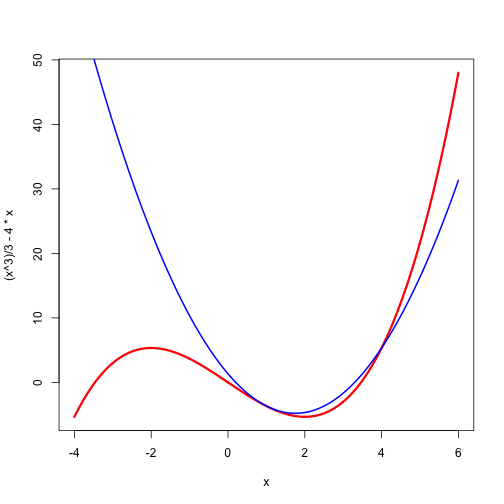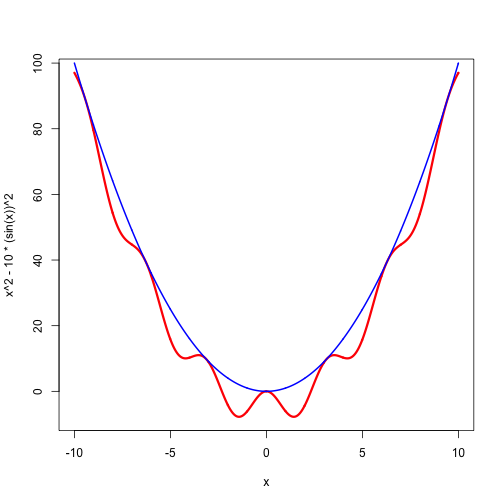II.1.2.1: Majorization at a Point
Suppose and are real-valued functions on . We say that majorizes over at if
- for all ,
- .
If the first condition can be replaced by
- > for all with ,
we say that majorization at is strict.
Equivalently majorization is strict if the second condition can be replaced by
- if and only if .
Since we formulate all optimization problems we encounter as minimization problems, we only use majorization, not minorization. But just for completeness, if majorizes at over , then minorizes at over .
We will see plenty of examples as we go on, but for now a simple one suffices. Figure 1 shows the logarithm on strictly majorized at by the linear function

Note that the definition of majorization at a point always has to take the set into account. If majorizes over at , then it may very well not majorize over a larger set. But, of course, it does majorize at over any subset of containing .
In most of our examples and applications will be equal to , , or but in some cases we consider majorization over an interval or, more generally, a convex subset of If we do not explicitly mention the set on which majorizes , then we implicitly mean the whole domain of . But we'll try to be as explicit as possible, because our treatment, unlike some earlier ones, does not just discuss majorization over the whole space where is defined.
As an example, consider the cubic which is majorized at on the half-open interval by the quadratic . This particular quadratic is constructed, by the way, by solving the equations and . On the other hand it is easy to see that a non-trivial cubic cannot be majorized at any by a quadratic on the whole real line, because , which is again a non-trivial cubic, would have to be non-negative for all which is impossible.

It follows directly from the definition that majorizes at if and only if has a global minimum over , equal to zero, at . And majorization is strict if this minimum is unique. Thus a necessary and sufficient condition for majorization at is Since a global minimum is also a local minimum, it follows that if majorizes at then has a local minimum , equal to zero, over at . This is a convenient necessary condition for majorization. A sufficient condition for to majorize at is that is a convex function with a minimum at equal to zero. Because of convexity this minimum is then necessarily the global minimum.
If majorizes at then the points where are called support points. If majorization is strict there is only one support point. There can, however, be arbitrarily many.
Consider and . Then majorizes on the real line, with support points at all integer multiples of . This is illustrated in Figure 3.

In fact if and then majorizes at all , and thus there even is a continuum of support points. And actually itself majorizes at all